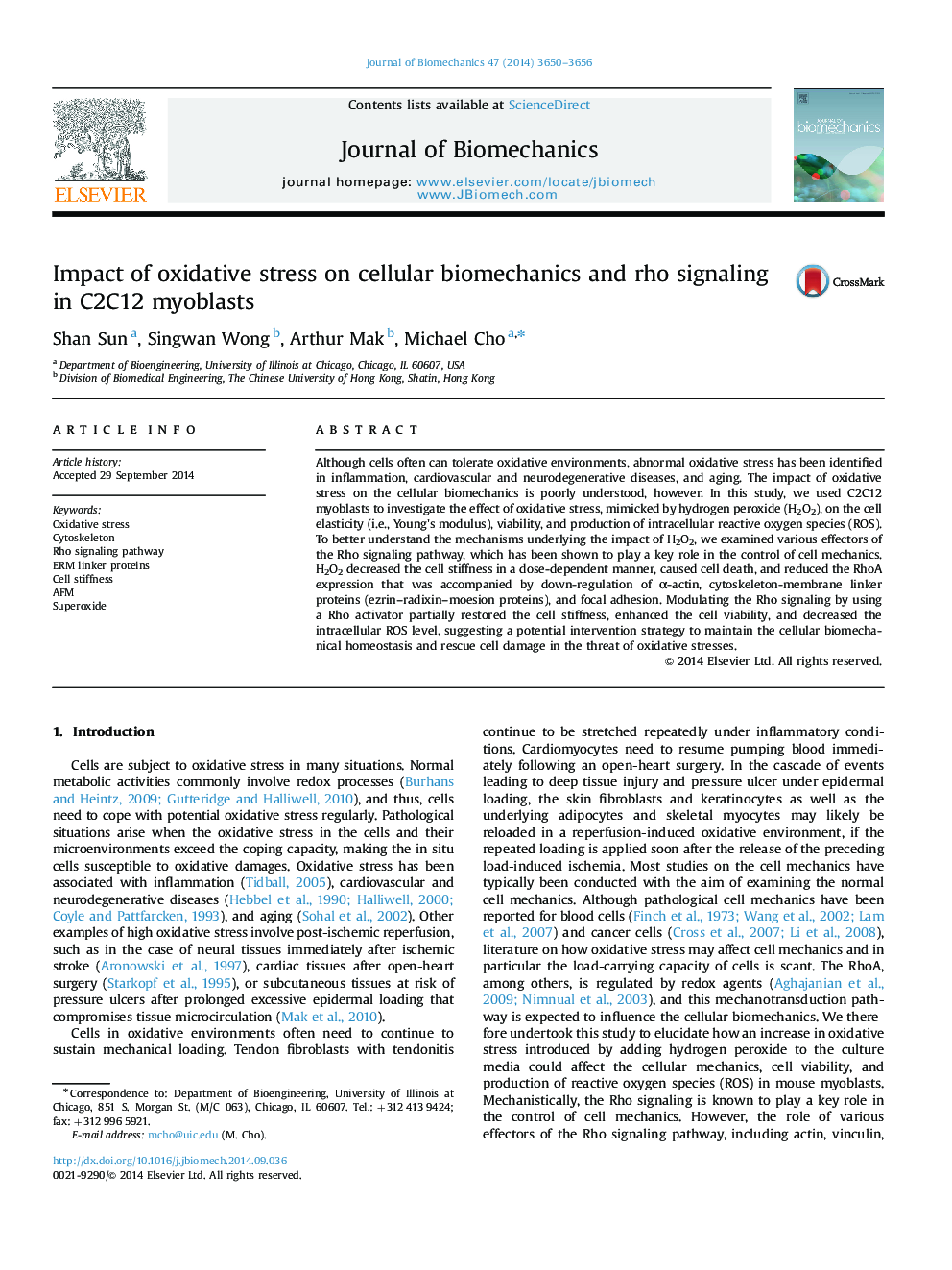| Article ID | Journal | Published Year | Pages | File Type |
|---|---|---|---|---|
| 872029 | Journal of Biomechanics | 2014 | 7 Pages |
Although cells often can tolerate oxidative environments, abnormal oxidative stress has been identified in inflammation, cardiovascular and neurodegenerative diseases, and aging. The impact of oxidative stress on the cellular biomechanics is poorly understood, however. In this study, we used C2C12 myoblasts to investigate the effect of oxidative stress, mimicked by hydrogen peroxide (H2O2), on the cell elasticity (i.e., Young׳s modulus), viability, and production of intracellular reactive oxygen species (ROS). To better understand the mechanisms underlying the impact of H2O2, we examined various effectors of the Rho signaling pathway, which has been shown to play a key role in the control of cell mechanics. H2O2 decreased the cell stiffness in a dose-dependent manner, caused cell death, and reduced the RhoA expression that was accompanied by down-regulation of α-actin, cytoskeleton-membrane linker proteins (ezrin–radixin–moesion proteins), and focal adhesion. Modulating the Rho signaling by using a Rho activator partially restored the cell stiffness, enhanced the cell viability, and decreased the intracellular ROS level, suggesting a potential intervention strategy to maintain the cellular biomechanical homeostasis and rescue cell damage in the threat of oxidative stresses.
